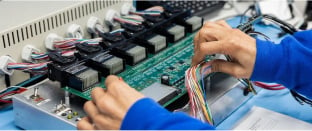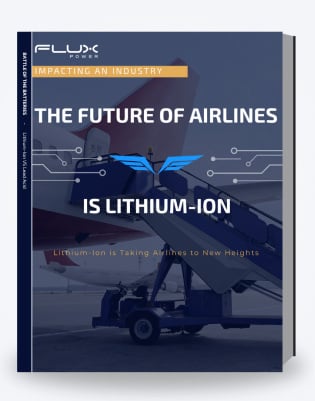What is a TPPL battery?
Thin plate pure lead, or TPPL, batteries have been emerging lately as an advanced form of lead acid batteries that offer faster charging and claim to be “maintenance-free.”
However, in reality, these batteries are just a new type of absorbed glass mat, or AGM batteries, in both performance and capacity.
Additionally, they still have stringent maintenance requirements in order to maintain their performance and lifespan.
How are they different from AGM batteries?
TPPL and AGM batteries fall under the lead acid battery category.
The most commonly used type of lead acid battery is “flooded”, which means the battery contains a liquid electrolyte. Flooded batteries are higher maintenance because they require watering, and the liquid solution inside the battery can be damaged in extreme temperatures via evaporation or freezing.
AGM batteries are a newer battery design that eliminates some of the maintenance that comes with flooded batteries. The electrolyte is absorbed into a special glass mat separator that makes it a solid than a liquid.
All lead acid batteries have lead plate grids that conduct current in and out of the battery. Typically, these plates contain additives to strengthen the lead and are pretty thick.
The main difference between TPPL and AGM batteries is that the grids on TPPL are pure lead, which greatly reduces the internal resistance of the battery. Thicker plates slow the flow of current, and the greater internal resistance has a negative effect on the battery’s performance.
The thinner lead plates of TPPL batteries delivers a higher capacity, a longer lifespan, and better efficiency than traditional AGM batteries.
Comparing TPPL to Lithium-Ion
While a TPPL battery may beat out the traditional lead acid battery on efficiency, capacity and lifespan, they still fall short of a lithium-ion battery in every category.
Lithium-Ion Forklift Battery
Newer technological developments have made lithium-ion forklift batteries significantly safer and more accessible, helping them to rise to dominance in the industrial markets.
Some features that make lithium-ion batteries a stronger candidate for industrial applications include:
- ability to opportunity charge
- reduction of maintenance
- elimination of separate charging rooms
Battery Charging?
Lithium-ion battery’s ability to opportunity charge is a great advantage for companies looking to improve productivity, because the extensive charging time of lead acid batteries is one of their biggest downsides.
Lead acid batteries have very specific charging requirements; they should be near fully discharged before being plugged in, and they should be fully charged each time they’re plugged in. This eliminates any possibility for opportunity charging without causing damage that can impact the battery’s capacity
Altogether, the charging process for a typical lead acid battery takes 12-16 hours. For a TPPL battery, they have the ability to partial charge during a shift but it still must be fully charged and discharged to avoid damage.
A lithium-ion battery actually performs better when opportunity charged rather than deep-cycled, making them a great fit for multi-shift industrial applications. Opportunity charging allows for employees to take advantage of breaks or shift changes to increase equipment uptime and maximize productivity.
As warehouses seek to improve productivity across the board, the ability to have more flexibility with operations in general is a huge plus. No longer do forklift operators have to worry about long equipment charging times – instead, they can focus on their work assignments leading to a rise in productivity in warehouse operations.
TPPL Battery Lifespan vs. Lithium-ion
The average lifespan of a lithium-ion battery is 2000-3000 cycles, nearly double that of a lead acid battery.
TPPL batteries’ main selling point is that they are capable of handling high discharge and charge rates; however, these higher cycling rates will increase the level of internal heat inside the battery, reducing the battery’s lifespan.
As a result, their lifespan tends to be shorter than that of a traditional AGM battery with thicker plates.
They require the same amount of time-consuming maintenance to maintain their capacity. This would require a full recharge after each cycle, but in multi-shift applications, this practice is not efficient and the batteries withstand some capacity loss as a result.
TPPL battery manufacturers say that up to 80% of their capacity is usable for up to 1200 cycles. By contrast, lithium-ion batteries offer more than 80% of usable capacity at 3000+ cycles - assuming they’re being properly charged and maintained.
Battery Efficiency
Energy efficiency is determined by measuring the transfer of electrons and how many are lost during a full charge/discharge cycle of the battery. The higher the battery c-rating, the lower the number of electrons lost, and the greater efficiency of the battery.
TPPL batteries are about 85% efficient, compared to the traditional lead acid battery efficiency of 60%.
However, lithium-ion batteries have one of the highest efficiency rates at 99% or higher.
Best Type of Forklift Battery
While TTPL offers more benefits to electric forklifts than traditional lead acid batteries, TPPL batteries are not as efficient as lithium-ion batteries. Lithium-ion batteries are still the top choice for forklifts because they have
- faster charging capabilities with no loss in capacity
- a longer cycle life
- one of the highest energy efficiency rates
All these lithium-ion battery benefits can help fleet managers save time and money in their operations.












